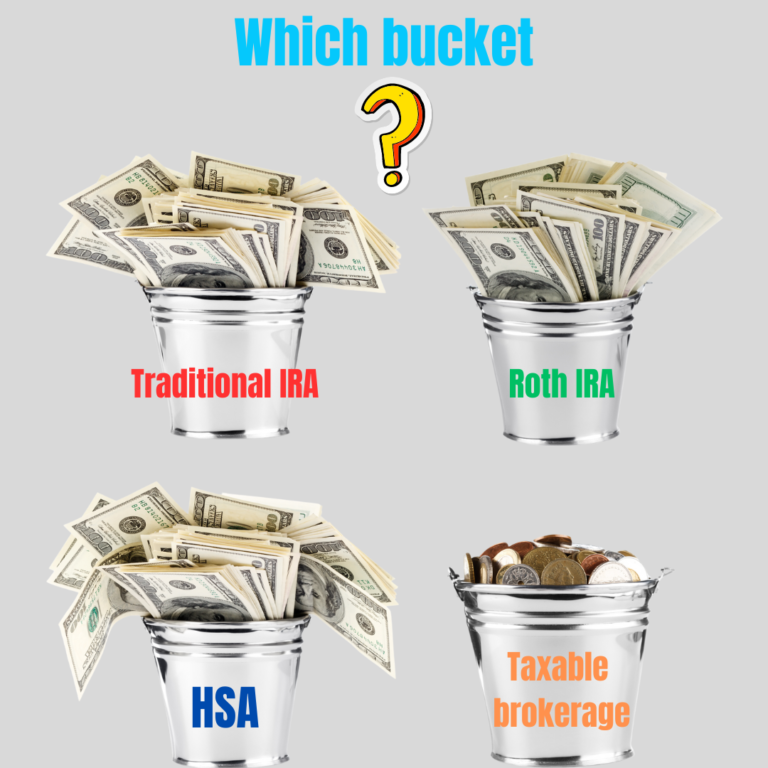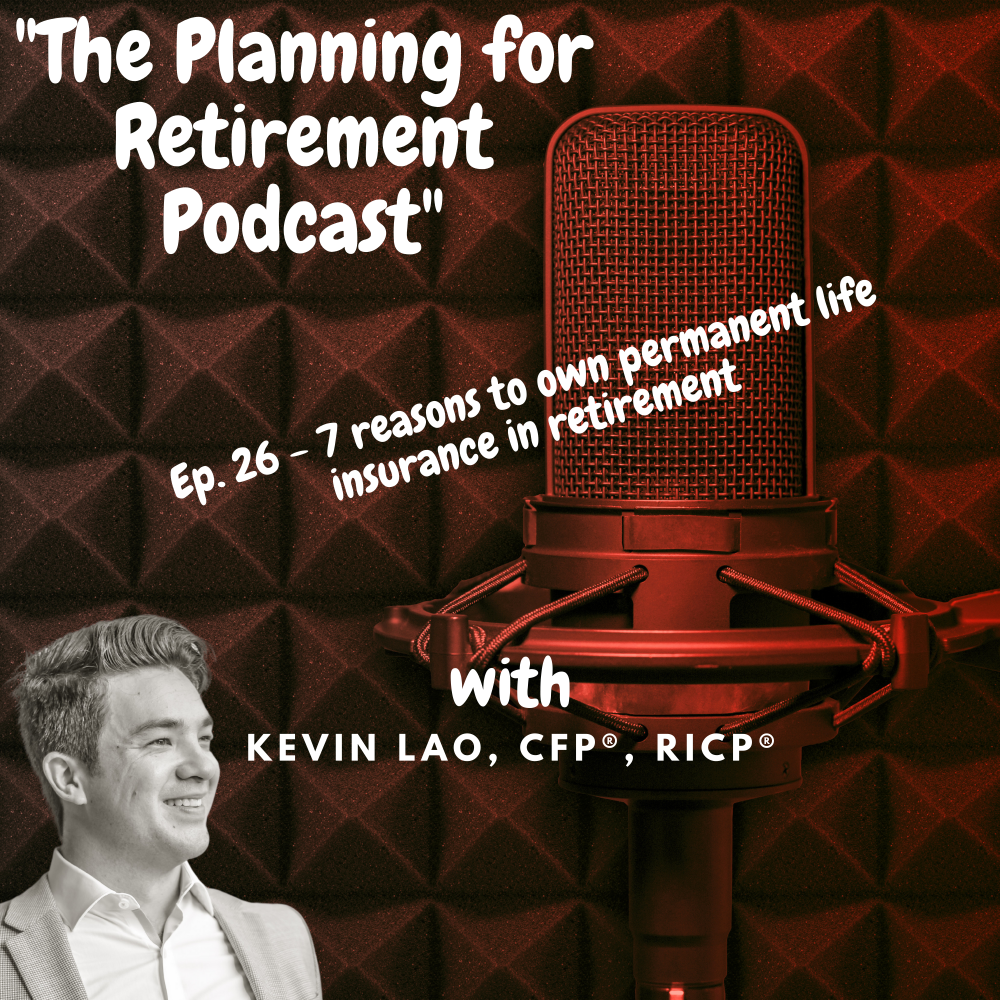Edit Content
Jacksonville Florida
Your trusted financial team
- Serving St. Augustine
- Serving Jacksonville
- Serving All of the United States Remotely
- [email protected]
- (904) 323-2069
FOLLOW US
Your trusted financial team
We’ve all heard the sales pitches! “Permanent life insurance solves all of your problems!”
For those of you who have followed me for a period of time know I don’t believe this to be true. But at the same time, there is a large % of the financial advisor (and talking heads) population that blanketly tells people, “Don’t ever buy permanent life insurance.”
To me, this is a breach of fiduciary duty. Just because we all have our biases doesn’t mean we should PUSH those biases on someone’s personal financial situation. As my friend Cody Garrett likes to say, “Keep Finance Personal.”
Here is a link to the article I referenced in the show about “How to divide assets in a blended family.”
Here’s a link to an episode from Andy Panko’s podcast;
Episode 77 – “Understanding cash value life insurance and how it’s sold, with Kevin Lao.”
This could be a nice compliment to what we discussed today!
I hope you enjoy it.
Make sure to give the show a follow and leave us a review so we can reach more people and make a bigger impact!
Kevin
These three statistics don’t add up to me!
1. 70% of Americans over 65 will need long-term care during their lives.
2. Fewer than half of you over the age of 65 own insurance to pay for long-term care. Essentially, you are planning to self-insure for long term care.
3. This is the crazy part. 70% of the care being provided is done by unpaid caregivers! Aka. family members…🤔
I wrote about long-term care planning before, but my convictions on this have only increased over the years.
In my previous article, I talked about considerations on whether or not you should purchase insurance.
We also just finished recording a three-part series on The Planning for Retirement Podcast (PFR) about how to fund long-term care costs. Episodes 22 and 23 were about using long-term care insurance and episode 24 was about how to self fund long-term care.
So why do these statistics bother me?
If the majority of retirees will need care, and they are intentionally not buying insurance, that means they plan to self fund for long term care (by default). However, why are family members providing the majority of long term care and not hired help!?
The answer: because there was no real plan to begin with. In reality, it was a decision that was never addressed, or perhaps in their mind they decided to “self fund.” However, that decision was never communicated to their loved ones.
Let me ask you. If you are in the majority that plans to self fund, what conversations have you had with your spouse? Your power(s) of attorney? Your trustee(s)? Do they know how much you’ve set aside if long term care was ever needed? Do they know which accounts they should “tap into” to pay for long-term care?
The chances are “no,” because I’ve never met a client who did this proactively on their own. Ever. And I’ve been doing this for 15 years.
So, this article is for you if you are planning to bypass the insurance route and use your own assets to “self fund long-term care.” I believe this is one of the most important decisions you can make when planning for retirement because it can save how you are remembered.

It is impossible to pinpoint the exact number YOU will need for care. But let’s pretend your long-term care need will fall within the range of averages.
On average, men need care 2.2 years and women 3.7 years.
The 2021 cost of care study by Genworth found that private room nursing homes cost $108,405/year. Assisted living facilities cost $54,000/year. These are national averages, and the cost of care varies drastically based on where you live.
So let’s use this ballpark figure of $118,800 – $238,491 for men, and $199,800 – $401,098 for women (2.2x the averages for men and 3.7x the averages for women).
The major flaw in using this math is that most people have some sort of guaranteed income flowing into their bank accounts.
Of course, not all of that income could be repurposed, especially if you are married. However, perhaps 25%, 50% or 75% of that income could be repurposed for caregivers.
Let’s say you are bringing in $100k/year between Social Security, Pension, and Required Minimum Distributions. Let’s say you are married, and all of a sudden need long term care. For simplicity’s sake, your spouse needs $50k for the household expenses. The other $50k could be repositioned to pay for long-term care. After all, if you need care, you probably are not traveling any longer, or golfing 5 days/week. This unused cash flow can now be dedicated to hiring professional help and protecting your spouse from mental and physical exhaustion.
If we assume the high-end range for men of $238,491, but we assume that $110,000 could come from cash flow (2.2 years x $50k of income), then only $128,491 of your assets need to be earmarked to self fund long term care.
Hopefully, that’s a helpful framework and reassurance that trying to come up with the perfect number is virtually impossible. After all, you may never need care. Or, perhaps you will need care for 5+ years because of Alzheimer’s.
My key point in this article is to address this challenge early (before you turn 60), and communicate your plan to your loved ones.

My personal favorite is the Health Savings Account, or HSA. I wrote in detail about HSA’s in another blog post that you can read here.
Here’s a brief summary:
What is a qualified healthcare cost?
Look up IRS publication 502 here, which is updated annually.
One of the categories for qualified healthcare costs is in fact long-term care! This means you can essentially have a triple tax-advantaged account that can be used to self insure long-term care in retirement.
However, you need to build this account up before you retire and go on Medicare. Medicare is not a high-deductible health plan!
But, if you have 5+ years to open and fund an HSA, it can be a great bucket to use in your retirement years, particularly long-term care costs.
The 2023 contribution limits are $7,750 if you are on a family plan and $3,850 if you are on a single plan. There is also a $1k/year catch-up for those over 55.
So, if you’re 55, you could add up to $43,750 in contributions for the next 5 years. If you add growth/compounding interest on top of this, you are looking at 6 figures + by the time you need the funds for care in your 80s. Not bad, right?
This bucket is another great option. Mostly because of the flexibility and the tax advantages of taking distributions. Unlike a 401k or IRA, these accounts have capital gains tax treatment. For most taxpayers that would be 15%, which could be lower than your ordinary income tax rate (it could also be as low as 0% and as high as 20%+).
If you are earmarking some of these dollars for care, I would highly recommend two things:
What’s nice about this bucket is that it’s not a “use it or lose it.” Just because you segregated some assets to pay for care, doesn’t mean those dollars have to be used for care. When these dollars pass on to the next generation, they should receive a step up in cost basis for your beneficiaries. If the dollars are in fact needed for care, you will only pay taxes on the realized gains in the portfolio.
🤔 Remember when we talked about tax loss harvesting in episode 19? Well, this strategy could also apply to help reduce the tax impact if this account is used to self-insure long-term care.
Of course, cash is cash. No taxes are due when you withdraw money from a savings account or a CD. Now, I wouldn’t suggest using a CD or cash to self-insure care, simply because it’s very likely that account won’t keep pace with inflation. However, if there is some excess cash in the bank when you need care, this could be a good first line of defense before the more tax-advantaged accounts are tapped into.
This bucket is often the largest account on the balance sheet when you are 55+. However, many advisors and financial talking heads recommend against tapping these accounts to self insure long term care because of the tax burden.
Well of course, it may not be ideal as a first line of defense to pay for care, but if it’s your only option, “it is what it is.”
But here’s the thing. If you are needing long term care, you’re most likely over the age of 80. This means you are already taking Required Minimum Distributions or RMDs. If you have a $1mm IRA, your RMD would be $62,500 at age 85. Let’s say you also have Social Security paying you $24,000/year. That’s a total income of $86,500 that is coming into the household to pay the bills. This was my point earlier in that you likely have income coming in that can be repurposed from discretionary expenses to hiring some professional help for care.
This means that you may not need to increase portfolio withdrawals by a huge number if RMDs are already coming out automatically.
But yes, you’ll have taxes due on these accounts based on your ordinary income rates. And yes, if you increase withdrawals from this bucket, this could put you in a position where your tax brackets go up, or your Social Security income is taxed at a higher rate, or perhaps will have Medicare surcharges.
On the flip side, this could also trigger the ability to itemize your deductions due to increased healthcare costs. In fact, any healthcare costs (including long term care) that exceed 7.5% of your adjusted gross income could be counted as a tax deduction (as of 2023).
The net effect essentially could be quite negligible as those additional portfolio withdrawals could be offset with tax deductions, where applicable.
Maybe you bought a life insurance policy back in the day that you held onto. Or you purchased an annuity to provide a guaranteed return or guaranteed income. However, you may find that your goals and circumstances change throughout retirement. Perhaps your kids are making a heck of a lot more money than you ever did, so they don’t have a big need for an inheritance. Or, that annuity you purchased wasn’t really what you thought it was. You could look at these accounts as potential vehicles to self-insure for long term care.
Life Insurance could have two components – a living benefit (cash value) and a death benefit. In this case, you could use either or as the funding mechanism for long term care.
Let’s say you have $150k in cash value and a $500k death benefit. Instead of tapping into your retirement accounts or brokerage accounts, you could look at borrowing or surrendering your life insurance cash value to pay for care. Or, you could look at the death benefit as a way to “replenish” assets that were used to pay for care.
Annuities could be tapped into by turning the account into a life income, an income for a set period of time, or as a lump sum. All of those options could be considered when it comes to raising cash for this type of emergency.
This is the second most tax-efficient retirement vehicle behind the HSA. It’s not only a great retirement income tool, but it’s also a great tool to use for financial legacy given the tax-free nature from an estate planning perspective. However, this account could be used to self insure long term care without triggering tax consequences.
Let’s say you need another $30k for the year to pay for care. But an additional $30k withdrawal from your traditional 401k would bump you into the next tax bracket. Instead, you could look to tap into the Roth accounts in order to keep your tax bracket level.

The largest asset for most people in the US is their home equity. However, people rarely think of this as a way to self insure long term care. In fact, this is why many caregivers are family members! They want their loved ones to stay at home instead of moving into a nursing home. But perhaps there isn’t a huge nest egg to pay for care. If you have home equity, you could tap into that asset via a reverse mortgage, a cash-out refinance, or a HELOC. There are pros and cons of each of these, but the reverse mortgage (or HECM) is a great tool if you are over the age of 62 and need access to your equity.
The payments come out tax-free, the loan doesn’t need to be repaid (unless the occupant moves, sells, or dies), and there are protections if the value of the home is underwater.
Now that you have a decent understanding of how much to set aside and which accounts might be viable for you, it’s time to have a family meeting.
If you’re married, have a conversation with your spouse.
If you have children, bring them into the discussion, especially those that will have a key decision-making role (powers of attorney, trustee etc).
You know your family dynamic best. The point you need to get across is that you do have a plan to self insure long term care despite not owning long term care insurance. Your loved ones need to know how much they could tap into (especially the spouse) in the event you need care. This is very important, give your spouse permission to spend! Being a caregiver, especially a senior woman, will very likely result in burnout, stress, physical deterioration, mental exhaustion, and resentment. If you simply leave it to your spouse to “figure out,” they will always resort to doing it themselves in fear of overspending on care.
❌ Don’t do this to them!
I hope you found this helpful! Make sure to subscribe to our newsletter below so you don’t miss any of our retirement planning content! Until next time, thanks for reading!
Your kids might be financially independent, your mortgage is close to being paid off, and you are getting close to having what you need to retire comfortably. You might be wondering, “Should I own life insurance in retirement?” So, before you go and cancel that policy, read this post and see if you would be a good candidate to own some amount of life insurance for the long haul.

Before we dive in, let’s go over the basics of the two primary types of life insurance. Term Insurance is just that, it’s for a specified term. This is a cost-effective solution for a temporary need. Let’s say you have young children, a mortgage, and another 20 years of earned income until retirement. The death benefit you will need, on average, will be at least 10-16x your gross income (according to the CFP board). So, if your income is $200,000/year, you will need approximately $2mm-$3.2mm of life insurance.
Depending on your health, this will only cost you pennies on the dollar (perhaps $1800-$3200/year). The reason it’s so cost effective is that only 1% of term policies ever pay a death claim, so term insurance is one of the most profitable products an insurance company can sell!
Permanent Insurance is of course, permanent (mind blown). There are many flavors out there; whole life (traditional), universal life, variable life, variable universal life, joint survivor universal life, and indexed universal life, to name a few. If you see the term variable, this means the policy performance is going to be tied to an underlying sub account that can be invested, like your 401k plan. If you don’t see the term variable, this means the performance is going to be tied to the performance of the insurance company’s general account, which is quite conservative. If you see indexed, this has a component of a fixed rate with potential upside of a targeted index, like the S&P 500. The difference between universal and traditional whole life is essentially the cost of insurance schedule. With traditional whole life, you have a fixed cost schedule at the time you start the policy, and it stays that way for the life of the plan. With universal, the cost of insurance goes up each year as you get older, but the premiums don’t necessarily go up each year. The schedule is flexible in that you can stop paying premiums one year (assuming you have enough cash value to support it), start again the next, pay half the premium another year and double the premium the year after. If you attempted this with traditional whole life, your policy would get cancelled, so don’t do that. I’m also not advocating you make premium payments to a universal policy like so, but it’s nice to have some flexibility.
I just want to emphasize how important it is, if you have a universal life policy, to review the performance at least annually. You can request an in-force illustration at any time to show how your policy has performed, and how it’s expected to perform based on fresh assumptions. I can’t tell you how many times I’ve looked at universal policies that people have paid into for decades that are on the verge of breaking.
The common theme for all permanent policies, if they are structured properly, is the death benefit should be in force for as long as you live. Additionally, there is a cash value component that you can access while you are living. This can be done through policy loans or partial surrenders.
So you might be wondering, why wouldn’t everyone buy permanent insurance and skip the term? The answer is simple, the premiums can range from 5-15 times more expensive! For this post, I will mainly discuss the argument of simply owning life insurance in retirement, whether it’s term or permanent is not the point. However, there are certain arguments I will make that ONLY permanent insurance can solve for. This is why it’s critical to begin with the end in mind and work backwards.
Currently, the federal estate exemption is $12.06mm/person (or $24.12mm for married couples). If your total estate is valued above the threshold and you die in 2022, you will pay tax on the amount ABOVE the threshold. The tax rates range from 18%-40%, depending on the size of your estate. Let’s say you had a total estate of $30mm and were married in 2022. If both you and your spouse passed away today under the current law, you would pay taxes on $5,880,000 at the federal level. There are also 17 states that have a “death tax,” so be careful where you live when you die as you might owe state AND federal estate taxes (and by “you,” I mean your beneficiaries)! For example, Massachusetts and Oregon tax estates in excess of $1mm! As you can see, living in an estate tax friendly state is a big decision point for many retirees.
This can become problematic for your heirs to pay these large sums of taxes. If you own a closely held business, a real estate portfolio, or a mix of stocks and bonds, you probably want your heirs to continue to enjoy the fruits of your labor and preserve those assets. Well, if your beneficiaries owe a seven figure tax bill, they might be forced to sell an extremely valuable asset in order to pay the taxes. This is where permanent life insurance can come into play. Life Insurance is a tax free payment of cash to your designated beneficiary. Therefore, instead of forcing your beneficiaries to sell that valuable asset, the life insurance death benefit could be used to pay the estate tax bill.
*The Tax Cuts and Jobs Act will sunset after the year 2025. The federal exemption is scheduled to revert back to the $5mm/person limit (plus some inflation adjustments). So, while you may not exceed the federal thresholds today, you certainly could exceed them in a few short years. Plan accordingly!

Children with special needs often require permanent financial assistance. Meaning, their condition won’t make their life any easier as they get older. In fact, quite the opposite. The government provides some financial assistance for those they deem disabled in the form of Social Security Income, Medicare and Medicaid. However, you will likely want to provide additional financial support above and beyond the government assistance. While you are alive and working, you will do anything you can to provide that additional financial support. However, if something were to happen to you, how do you address that financial shortfall?
Owning a life insurance policy is a great solution to this problem. You can simply calculate the amount of annual income needed to support the beneficiary with special needs, and come up with an appropriate amount of life insurance to pay out to that beneficiary. These policies are often owned inside of what is called a Special Needs Trust. This special type of trust allows for the preservation of government support for the child, while at the same time receiving supplemental income from the trust. The longer you live, and the more assets you accumulate, might impact the amount of insurance that you need to own. Ideally you will want some amount of the insurance to be term and some permanent to accommodate the future accumulation of other assets.

You might be thinking life insurance is there to replace income when you are working, but how does it factor into retirement income? For starters, Social Security represents the largest pension fund in the world, and most retirees rely on it for some or most of their income in retirement. When one spouse dies, there is an automatic loss in Social Security income. The surviving spouse will elect to keep their own benefit, or the deceased’s benefit, whichever is higher. If a couple each had $24,000/year in social security benefits, this would result in $24,000/year in lost social security income upon the first spouse passing away. Additionally, after two tax years of filing as a qualifying widower, there could be a widow’s tax given they will have to transition over to a single filer, and potentially pay higher tax rates.
Furthermore, you might receive a pension from the military or government, or perhaps VA Disability income. The benefit might be cut in half, or even go to zero upon the annuitant passing away. Therefore, owning a life insurance policy through retirement can help replace lost social security or other pension income, making the surviving spouse whole and protecting their own longevity.
It’s estimated that medical costs in retirement will total about $300k for a couple that is 65 years old today, and that excludes Long-term care costs. The average cost of a nursing home in the US is north of $100k/year (in today’s dollars). If there was a need for long-term care at the end of the first spouse’s life, this could create a significant drain on retirement assets. This is especially true if the assets that were used to pay for long-term care came from retirement plans such as traditional IRAs or 401k plans, given the tax drag on withdrawals. Therefore, owning a life insurance policy can guarantee a cash infusion for the surviving spouse to protect their retirement lifestyle and their own longevity going forward. This could also be achieved with a life insurance policy with a Long-term care rider, which would allow funds from the policy to be paid in advance for long-term care costs, instead of waiting for the death benefit of the first spouse. Either way, utilizing some form of permanent life insurance in retirement is a great way to protect and/or replenish assets in the event long-term care becomes a financial drain.
I often times hear from clients they have a strong desire to leave assets to their children, grandchildren or even their favorite charity. Ultimately what they are saying is they don’t want to burn through the assets they have accumulated, but they still want to ENJOY their retirement! These clients often times have a very difficult time spending their own money in retirement simply because of the fear of running out of money and being a burden on their loved ones. My clients that own permanent life insurance in retirement can sleep extremely well at night knowing that at least one asset is guaranteed to be there upon their death. This ends up liberating the client to spend more freely on travel, bucket list activities, charitable giving, and overall results in a more enjoyable retirement lifestyle.
Life insurance does get more expensive as you get older, and you also have a greater risk of developing a medical condition that might make life insurance unobtainable. There is no one size fits all when it comes to retirement planning, especially when it comes to using life insurance in your retirement plan. The life insurance industry is quite complex with many carriers and many variations of permanent life insurance. Therefore, I highly recommend you consult with a fee-only financial planner who has expertise in this arena, like our firm! (Yes, I’m quite biased).
If you are interested in learning more about working with our firm, or would like to discuss your financial objectives, book a Mutual Fit meeting with the link below. Also, feel free to share this article with anyone that might find it useful.
Copyright © 2020 imagine financial security. All Rights Reserved. Website by Justin Bordeaux


